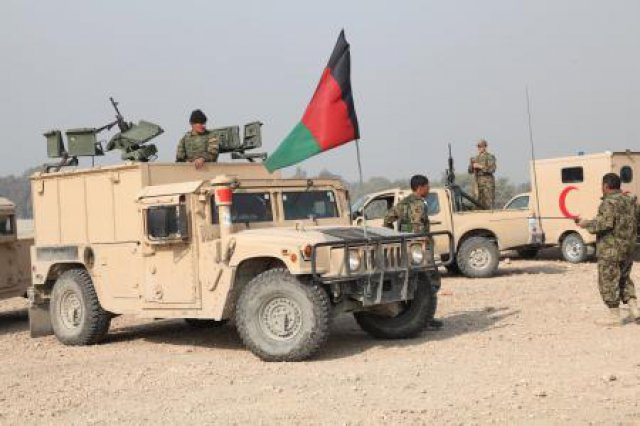“Insider-attacks” were recognized as the number-one strategic risk in Afghanistan during a NATO conference Jan. 24, and training to mitigate the threat was discussed by members of the International Security Assistance Force.
The International Insider Threat Conference was hosted Jan. 24, at the Joint Multinational Training Command in Grafenwoer. Trainers there demonstrated how behavioral cues can tip Soldiers when an insider attack is imminent.
Members of ISAF’s Insider-Threat Mitigation Working Group said Gen. John R. Allen, ISAF commander, recognizes insider attacks as a top risk and has leveraged brain power and leadership to mitigate the threat. They added ISAF is doing everything it can to protect coalition forces.
“We’re not taking this lightly. We’re taking a very sophisticated and holistic view of this problem,” said Marine Col. John Walsh, deputy commander of the Insider-Threat Mitigation Working Group. “This [insider-attack] is emerging as a signature weapon of this conflict.”
Since May 2007, when ISAF officially began tracking insider attacks, 126 ISAF personnel were killed, to include 62 in 2012, which is by far the highest year for these attacks. Since May 2007, a slightly higher number of Afghan National Security Forces, or ANSF, soldiers and police were casualties of these attacks.
“This is an ANSF and ISAF problem,” said Walsh. “We are both experiencing it. That’s why we are working together on the solutions.”
Hosting the event, Danish Minister of Defense Nick Haekkerup said coalition partners must work together, share information and stay committed to the cause, while mitigating risks.
In theater, every Soldier has a “guardian angel,” which requires movement and operations in pairs and groups. Further, scientifically-confirmed training using the study of human behavior gives ISAF Soldiers an advantage on the battlefield, leaders said. The applications aren’t just limited to war, they said, believing the techniques can be applied anywhere.
Greg Williams, trainer with Orbis Operations, a defense contractor, said Soldiers can be taught to recognize generic cues in body language, and can develop skills in cognitive reasoning and analysis. The training helps a Soldier assess situations more fully, he said.
Soldiers demonstrated training scenarios during the conference in a moderate-sized room with only tables, chairs and civilian attire and prop weapons.
Williams said Soldiers don’t need costly props and equipment to learn. The brain only requires a 60-percent solution to learn. The sparse setup provides enough the individuals to learn the concepts. This is important, he said, because the environment in Afghanistan is ever-changing. The training can happen anywhere and still be memorable.
“When it’s a mission and there is force-on-force, there are specific rules that apply. When it is an occupational force there are also specific rules,” said Williams. “Now, both of us [ISAF and ANSF] have to reconstruct and rebuild.”
Warriors might not be seeing the difference or make the proper adjustments right-away, and in the meantime there are other threats too, Williams said.
“Everybody can engage in certain levels of anger when this cue and this cue and this cue, when they come together, it always means homicidal intent,” Williams said.
He said in human behavior, three or more cues are significant. In Afghanistan, a Soldier is being taught that three or more cues in any one domain means he or she has to take action to prevent a more serious incident.
“…one cue might just be lucky, two cues might be happenstance, but when we have three it forms a pattern,” Williams said.










